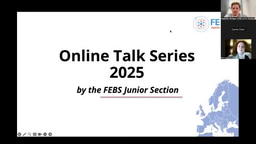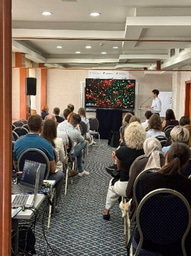Why do I preLight?

One major challenge for the scientific community – in my opinion – is communication. As scientists, we communicate our research to other specialists, for instance at conferences, in lab meetings, or in scientific articles, but we must also be capable of delivering information to a broader range of audiences coming from a variety of different backgrounds. And, importantly, what we communicate must be clear and delivered respectfully. Though these are all skills that we develop as we progress through our careers, learning how to communicate effectively is challenging, taking a lot of time and a lot of practice.
Scientific articles are extremely important for the dissemination of science but, of course, they are written for specialists and require experience to understand and interpret the information within. This is especially true if you are not familiar with the research subject. I have always been an avid reader and during my undergraduate studies I spent many afternoons outside of classes trawling through science articles (and many more sci-fi books…), yet I found myself shying away from certain topics with the belief I would not understand them, even when I had some training in reading scientific literature. Once I began my PhD – and now into my postdoc – understanding wider scientific topics became easier; however, I found my time to read became much more limited, so I continued to focus on papers I was comfortable reading and took less time to understand. I am a parasitologist by training and my field is quite small compared to others, so in reality I was not reading as broadly as I should have been.
I believe reading as widely as possible in science is essential for your scientific development. Sometimes it can seem like your project is far from what everyone else is doing, so it is always important to sit back and remember how your work fits into the wider scientific community. Plus, you never know what might drive your next hypothesis. During the pandemic, I began looking for ways to improve my ability to critically read papers and broaden my reading, whilst also looking for a fun way to contribute to the scientific community and help young (or indeed any) scientist navigate scientific literature – something I felt I was lacking as a young scientist. I came across preLights on Twitter, and I found them to be an accessible and quick way to keep up to date with a broad range of subjects. I was lucky that an advertisement to recruit new preLighters was posted soon after I discovered them, so I took the opportunity and applied. Shortly after, I was accepted as a preLighter.
preLighting – a chance to connect
PreLights are short articles aimed at summarising scientific research from preprint articles, which are openly available for anyone to access. The preLights are written by other scientists to highlight new and exciting research emerging prior to peer review. From the moment I was accepted into the preLight community, I felt warmly welcomed. For me, it is exciting to belong to a motivated community working together to break down communication barriers in science and support future researchers in their learning. I am very gratefully for this opportunity and for the chance to network with a diverse and inclusive pool of talented scientists at different career stages from across the global.
Being part of the preLighting team has vastly improved my ability to critically assess and review papers but the aspect of ‘preLighting’ I enjoy the most are the interactions I have with the authors. When we select a preprint article to preLight, we can raise questions with the authors in a more informal way. These questions can range in topic from specific interests relating to the article, their research area, or perhaps about any challenges they faced in completing their study. Their responses are often included as part of the preLight. For me, this experience has been extremely rewarding. It is enjoyable engaging with some very enthusiastic scientists that are excited to talk about their research, without the burden of criticism that we often face during the review process. Additionally, science can feel very isolating and impersonal. You often see years of experiments and experience distilled into a few figures, so my experience talking to the authors about their paper – for me – gives them a voice outside of their study and I feel it helps to humanise the review and publication process.
Going forward with Science Communication
More recently, with support from our community manager, preLights has started including a postLight feature. Here, you revaluate the paper you ‘preLighted’ after peer review, discussing changes and similarities, and giving yourself a chance to reflect on how the science has developed since the authors first published their preprint. It keeps others up to date of any key changes made during peer review, especially if the final paper is no longer ‘open access’ and freely available. Additionally, it highlights the fluidity of scientific publication that many younger scientists yet to publish may be unaware of. Often, the final version of a scientific article has evolved and adapted since its original drafting.
As I continue as part of the preLight community, I hope to continue raising awareness of the importance of scientific communication and aim to make science more accessible and inclusive for anyone that is interested. The community is forever developing, and I am excited to see what directions we will take in the future.
For any younger researchers starting out on their scientific journey, I would encourage you to take any opportunity you can to develop skills outside of the laboratory and to keep practising those skills. You never know when they will come in handy!
Photo by Salomé Watel on Unsplash





Join the FEBS Network today
Joining the FEBS Network’s molecular life sciences community enables you to access special content on the site, present your profile, 'follow' contributors, 'comment' on and 'like' content, post your own content, and set up a tailored email digest for updates.